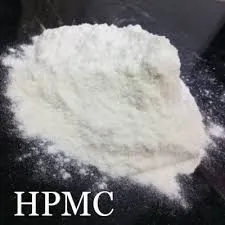
Sep . 28, 2024 16:07 Back to list
Hydroxyethyl Cellulose Production Techniques and Process Overview
The Manufacturing Process of Hydroxyethyl Cellulose
Hydroxyethyl cellulose (HEC) is a non-ionic cellulose ether that is widely used in various industries, including pharmaceuticals, cosmetics, and construction materials, due to its excellent thickening, emulsifying, and film-forming properties. The manufacturing process of HEC involves several steps that transform natural cellulose into this valuable polymer. Here, we will discuss the key stages of HEC production, typical raw materials used, and the conditions necessary for optimal synthesis.
1. Raw Material Selection
The first step in the manufacturing of hydroxyethyl cellulose is selecting high-quality raw materials. The primary source of cellulose is wood pulp or cotton linters, which are rich in cellulose content. These raw materials undergo several preprocessing steps, such as bleaching and grinding, to ensure that they are suitable for etherification. The purity and characteristics of the raw cellulose significantly influence the quality of the final product.
2. Etherification Process
The core of HEC production lies in the etherification process, where cellulose reacts with ethylene oxide in the presence of an alkaline catalyst. This stage can be broken down into sub-steps
- Alkaline Activation Wood pulp or cellulose is first treated with an alkali, typically sodium hydroxide (NaOH)
. This step swells the cellulose and makes its hydroxyl groups more reactive, which facilitates the etherification with ethylene oxide.- Etherification Reaction The activated cellulose is then exposed to ethylene oxide. The reaction between the cellulose hydroxyl groups and ethylene oxide results in the substitution of hydroxyethyl groups onto the cellulose backbone. The reaction conditions, including temperature, pressure, and time, play a critical role in determining the degree of substitution (DS) of the resultant hydroxyethyl cellulose. The optimal conditions may vary, but many manufacturers operate at temperatures around 35-80°C to achieve a balanced reaction rate and product quality.
3. Quenching and Neutralization
hydroxyethyl cellulose manufacturing process

Once the etherification reaction is complete, the next step is quenching the reaction to halt further modification of the cellulose. This is typically done by adding water to the reaction mixture. Following quenching, the product must be neutralized to remove any residual alkali. This is often achieved by introducing a weak acid, such as acetic acid, which reacts with the excess sodium hydroxide and converts it into a harmless salt.
4. Precipitation and Filtration
After neutralization, HEC is precipitated from the reaction mixture to separate it from the unreacted materials and by-products. This is usually done by adding a non-solvent, such as ethanol or isopropanol, which causes the hydroxyethyl cellulose to become insoluble. The precipitated HEC is then filtered out, rinsed to remove impurities, and dried to obtain a solid product.
5. Drying and Milling
The final stage of HEC production involves drying the filtered HEC. The drying process can be done using various methods, including air drying, vacuum drying, or using a drying oven. The goal is to obtain a product with specific moisture content that ensures stability and usability. Once dried, the HEC is milled to the desired particle size, as different applications may require different particle sizes for optimal performance.
6. Quality Control and Packaging
Before hydroxyethyl cellulose is distributed for commercial use, stringent quality control measures must be implemented. Tests are conducted to evaluate the viscosity, degree of substitution, solubility, and other essential properties of the HEC. These tests ensure that the product meets industry standards and customer specifications. After passing quality control, HEC is packaged in airtight containers or bags to maintain its quality during storage and transport.
Conclusion
The manufacturing process of hydroxyethyl cellulose is a well-defined sequence of steps that transforms raw cellulose into a versatile polymer. Through careful selection of raw materials, controlled reaction conditions, and thorough quality assurance, manufacturers can produce HEC that meets diverse requirements in various applications. As industries continue to seek more sustainable and multifunctional materials, HEC's importance in the marketplace is expected to grow, thereby increasing the need for efficient production processes.
-
Versatile Hpmc Uses in Different Industries
NewsJun.19,2025
-
Redispersible Powder's Role in Enhancing Durability of Construction Products
NewsJun.19,2025
-
Hydroxyethyl Cellulose Applications Driving Green Industrial Processes
NewsJun.19,2025
-
Exploring Different Redispersible Polymer Powder
NewsJun.19,2025
-
Choosing the Right Mortar Bonding Agent
NewsJun.19,2025
-
Applications and Significance of China Hpmc in Modern Industries
NewsJun.19,2025







